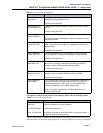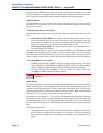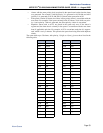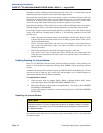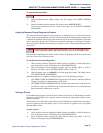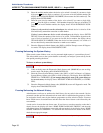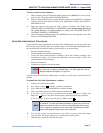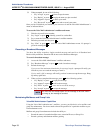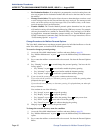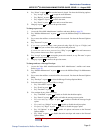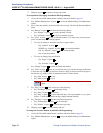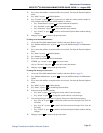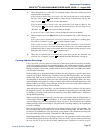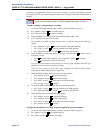
Administrator Procedures
INTER-TEL
®
CS-5200/5400 ADMINISTRATOR GUIDE, ISSUE 1.1 – August 2005
Mailbox and Extension ID Personal Options
Page 59
• Set additional personal options for a mailbox
Mailbox and Extension ID Personal Options
Voice Mail mailboxes provide personal options that allow the user to customize messaging
functions. However, before personal mailbox options can be changed, the mailbox must be ini-
tialized by the user. For programming instructions to change personal options, refer to the
applicable Inter-Tel Phone User Guide, which are listed under “Phone User Guides” on page 6.
Each subscriber’s mailbox has the following personal options:
• Greetings: A primary or alternate greeting is played when callers reach a user’s mail-
box. Users can change a primary greeting at any time to reflect a change in status and/or
record and enable an alternate greeting. If you and the user elect not to record a per-
sonal greeting, the default system greeting is used.
• Directory Name: A recorded name is used to identify each mailbox in the directory
and to verify the mailbox number when messages are addressed by non-subscribers and
other subscribers. Although the name is recorded when a user first sets up the mailbox,
you can change it at any time.
• Password: Passwords prevent unauthorized access to a mailbox. Although the mailbox
user creates a personal password when they first set up the mailbox, you can change it
at any time.
• Message Envelope Options: Each message is preceded by an “envelope” that can
include the time and date the message was left, the source of the message, and addi-
tional information that is associated with the media type. Voice mail messages have a
length envelope option, e-mail messages have a subject option, and faxes have a pages
option. By default, all envelope options are enabled for each type of message.
• Remote Messaging: Remote Messaging is available for voice mail messages only and
is enabled in DB Programming on a per-mailbox basis. Using Remote Messaging, the
user can program voice mail to call the mailbox owner when a new message arrives.
Using a “cascade”—a series of up to nine telephone numbers, Voice Mail calls each
number until it successfully connects to a device such as a pager, answering machine,
etc. If for some reason Voice Mail is not able to use remote notification, the mailbox
receiveS a message stating that notification could not be completed. For more informa-
tion about Remote Messaging options, refer to the applicable Inter-Tel phone user
guide.
NOTES
To provide system security, all mailboxes and extension IDs should have a
password. To make the passwords difficult to guess, they should not match
the mailbox number or consist of one digit repeated several times. This is
especially important for the Voice Mail Administrator's mailbox, which
allows programming access to other mailboxes
NOTE
The system has a database option called “Play Recording Instructions”
that affects mailbox greetings. If this option is enabled, the “leave a mes-
sage after the beep” system prompt plays following the primary or alter-
nate greeting. If disabled, no prompt is played and the beep preceding
recording occurs immediately after the primary or alternate greeting ends.
The Play Recording Instructions flag is enabled by default.
NOTE
To provide system security, all mailboxes and extension IDs should have
a password. To make the passwords difficult to guess, they should not
match the mailbox number or consist of one digit repeated several times.
You should recommend to all users that they set a password.



